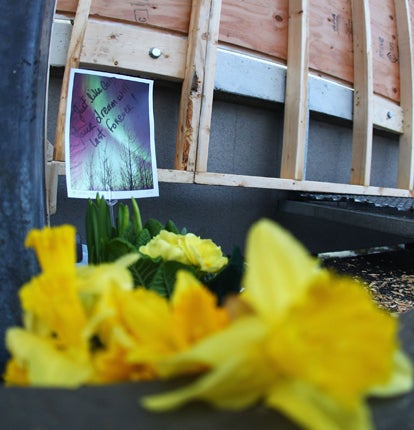Your support helps us to tell the story
From reproductive rights to climate change to Big Tech, The Independent is on the ground when the story is developing. Whether it's investigating the financials of Elon Musk's pro-Trump PAC or producing our latest documentary, 'The A Word', which shines a light on the American women fighting for reproductive rights, we know how important it is to parse out the facts from the messaging.
At such a critical moment in US history, we need reporters on the ground. Your donation allows us to keep sending journalists to speak to both sides of the story.
The Independent is trusted by Americans across the entire political spectrum. And unlike many other quality news outlets, we choose not to lock Americans out of our reporting and analysis with paywalls. We believe quality journalism should be available to everyone, paid for by those who can afford it.
Your support makes all the difference.Gravitational force overpowered out-of-control Georgian luger Nodar Kumaritashvili and left him unable to avoid the crash that claimed his life hours before the opening ceremony at the Vancouver Olympics, the International Luge Federation concluded in a report Monday.
FIL reaffirmed that the crash was an "unforeseeable fatal accident" caused by a number of factors. It added that Kumaritashvili's sled reacted in ways that computer simulations could not foresee or mimic, the high-speed impact throwing him surprisingly skyward.
"No athlete would have control in dealing with this type of 'catapult' effect," the report said.
Much of the report supports what FIL has said since the crash, that Kumaritashvili's mistakes primarily caused his death.
The report said Kumaritashvili exited the 15th curve in the 16-turn course too late, causing him to take a less-than-favorable line into the final curve. FIL decided that Kumaritashvili tried to keep the sled low on the track, which raised the amount of G-force he would experience in the final seconds.
With that, he lost control.
Kumaritashvili's right hand reached for the ice, which distributed more weight onto his right shoulder. Combined with the G-force, that meant the sled runners basically steered him straight to the right — in this case, into the inside corner of the wall.
"Both actions literally served to pivot it in a similar way a sharp turn is made when a handbrake is applied to a car at a high rate of speed," the report said.
Typically, when a sled hits the wall like Kumaritashvili's did, the runners will break or the slider will be thrown off the wall. Neither happened, and the energy threw Kumaritashvili over the opposite side of the track.
Kumaritashvili's hips cleared that wall by a few centimeters (inches). Had that wall been a bit higher, he would have likely remained in the track. Instead, he sailed over the barrier, the back of his head striking a steel beam — the fatal blow.
FIL said that, in normal situations, that wall would have been high enough to keep a slider from exiting the track.
"Neither the computer simulations nor the technical experts who (certified) the track ... foresaw the possibility," the report said.
Kumaritashvili's death during a training run Feb. 12 was the first at a sanctioned luge track in nearly 35 years.
"You have to make sure this doesn't happen again," FIL secretary general Svein Romstad told The Associated Press. "It's very emotional, even today."
FIL called it a final report, but in actuality, many more will be delivered in the coming weeks and months.
The coroner in British Columbia will incorporate FIL's findings into its own report, expected soon. FIL meetings in May and June will further discuss track safety, particularly at the facility to be built for the 2014 Sochi Olympics. And it's unclear what changes, if any, will be made to the actual structure of the 2010 Olympic track in Whistler.

Join our commenting forum
Join thought-provoking conversations, follow other Independent readers and see their replies
Comments